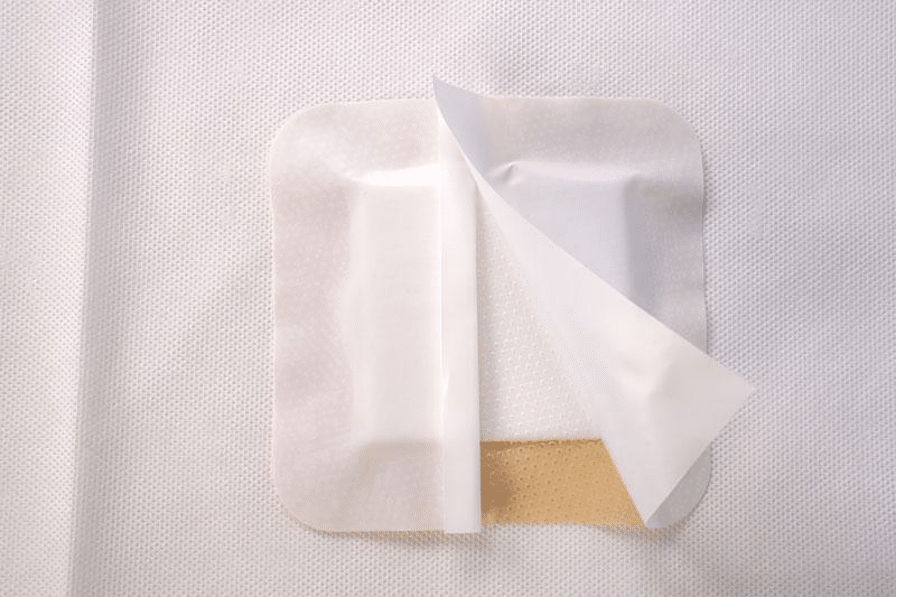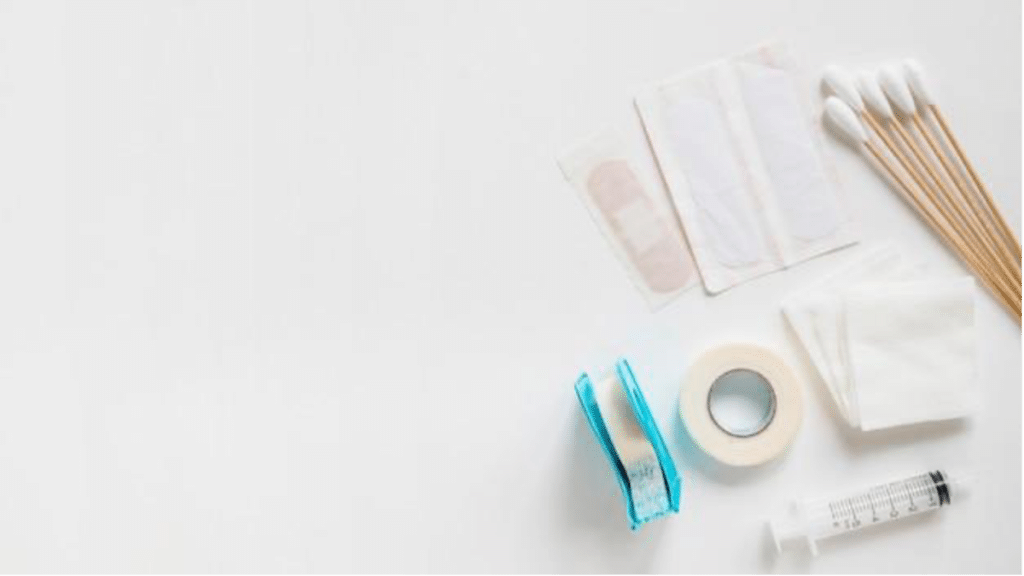As early as in 1962, Dr. George D. Winter (1927-1981) published his landmark Nature paper Formation of the scab and the rate of epithelisation of superficial wounds in the skin of the young domestic pig, where he demonstrated that wounds healed faster if kept moist, the modern wound dressings that promote moist wound healing has been evolving ever since [1]. The traditional wound dressing and care solutions are often as primary or secondary dressings to protect the wound from contamination. Unfortunately, gauze, lint, plasters, bandages (natural or synthetic), and cotton wool, among other traditional wound care solutions, are restricted in more than one way.
The Setbacks of Traditional Wound Care Solutions
1. Poor retention
If you have used the band-aid before, you must be familiar with its poor retention. Once peeled off, they can hardly be stuck back, making them good for single use and bad if you want to check your wounds frequently.
2. Non waterproof
To make it worse, most of the traditional wound care products are non-waterproof, rendering them less adhesive against body fluids like exude and sweat. In the hot, humid summers, the sweating skins can only worsen their fixation, as many of them fall off even before disposal.
3. Unbreathable nature
In the hot summers, bacteria and other viruses multiply faster, which is another bad news for users of traditional wound care products. Surely, the unbreathable gauzes feel horrible, leaving your skins red and itchy, but they cause something more terrible: they increase the likelihood of infection.
4. Unbearably painful when tearing off
Another painful memory associated with the traditional wound care solutions could be the pains in removal. They might do a poor job sticking to your skin, but they can be unnecessarily great at removing your hairs and causing pains when peeling off.
Advanced Wound Care Solutions Do Help!
Since we have briefed you through many literal pain points of traditional wound care solutions, you may be wondering: Are there a better choice? Yes! Advanced wound care solutions serve as another wound healing process, with the advanced wound dressings previously prescribed by clinicians, to secure shortened heal time, optimized drainage and lower risk of infection. Thanks to the progress in the wound care industry, advanced wound dressing has been gaining popularity among medical workers and non-medical consumers alike in recent decades.

They are called advanced for reasons. Take the silicone foam dressing with border , one of the advanced wound care solutions, for example. The silicone foam dressing is made up of a polyurethane absorbent foam pad and a polyurethane membrane, with an absorbent polyurethane foam layer in the center. This structure is highly effective at absorbing substantial quantities of exudates. The silicone foam dressing not only provides protection in the form of padding but also requires no additional overlying dressing due to its occlusive nature. Also, compared with their traditional counterparts, the bordered silicone foam dressing is:
1. Super retention
The silicone foam dressing with border resembles an enlarged band-aid, but it is so much better when it comes to retention. The bordered foam dressing ensures a gentle but secured fixation simultaneously. Even after peeling down once, it remains its adhesion, thus good for a frequent wound check and healing track. This principle also applies to the hard-to-dress area, such as fingers, legs and feet. They stay as strong as the second skin of patients’.

2. Breathable
Layered with even pore, the polyurethane film backing of silicone foam dressing is breathable, yet waterproof and bacteria resistant. If the patients happen to live in hot and humid areas. In that case, this could be an indispensable feature to offer extra comfortability and healing effect against a large number of sweats that might otherwise weaken its fixation, eventually exposing the wounds to the bacteria-infested environment.
3. Better absorbency
As previously mentioned, the foam layer helps absorb mild to moderate exudate, thanks to its nonwoven foam layer that distributes the excudate properly. This is not just to enhance the cleanness and comfortability of patients, but to effectively avoid a phenomenon called peri-wound maceration. When bodily fluids come into contact with the skin or a wound for long periods of time, it can cause maceration. This is where the skin softens and breaks down due to excessive moisture. Unfortunately, applying a bandage to a wound can often lead to maceration as bodily fluids can make the skin underneath wet.
The bordered foam dressing has superior absorbency which makes it suitable for treating wounds that range from low to highly exuding. These include pressure ulcers, diabetic foot ulcers, venous leg ulcers, traumatic wounds like skin tears, partial thickness burns, and for skin graft fixation. Additionally, silicone foam dressing is useful for treating second-degree burns, donor sites, postoperative wounds, and skin abrasions.
4. Enhanced comfortability
Traditional wound care solutions, be them gauzes, bandages or band-aids, are always linked to pains when peeling down. Choosing the silicone foam dressing with border means the patients do not need to experience such pains anymore. Regardless of its strong fixation, the bordered foam dressing minimizes pain and trauma when peeling down, enhancing patients’ comfort greatly.
5. No residue
Finally, the silicone foam dressing with border leaves no silicone residue, keeping the skin clean.
Conclusion
Represented by the silicone foam dressing, the advanced wound care solutions have their own strengths, such as shortened heal time, heightened comfortability and better healing effect than traditional wound care solutions for a certain types of wounds. As China’s leading manufacturer of disposable wound-care and surgical products, Winner Medical has been manufacturing both traditional and advanced medical dressings since 1991. Winner Medical are always happy to provide you with any information needed to make your selections.
References:
[1] George D. Winter. Available at:
https://en.wikipedia.org/wiki/George_D._Winter (Accessed: 27 July, 2022)
[2] Skin maceration. Available at:
https://en.wikipedia.org/wiki/Skin_maceration. (Accessed: 25 July, 2022)
[3] Soft Silicone Dressings Made Easy. Available at:
https://www.woundsinternational.com/download/resource/6106#:~:text=Soft%20silicone%20dressings%20are%20coated,adhesive%20residue%20on%20the%20skin4. (Accessed: 22 July, 2022)
